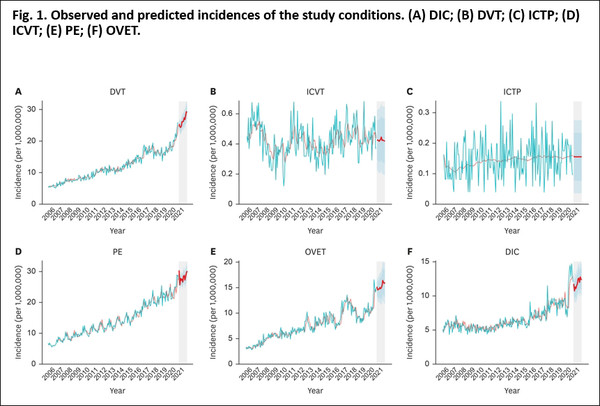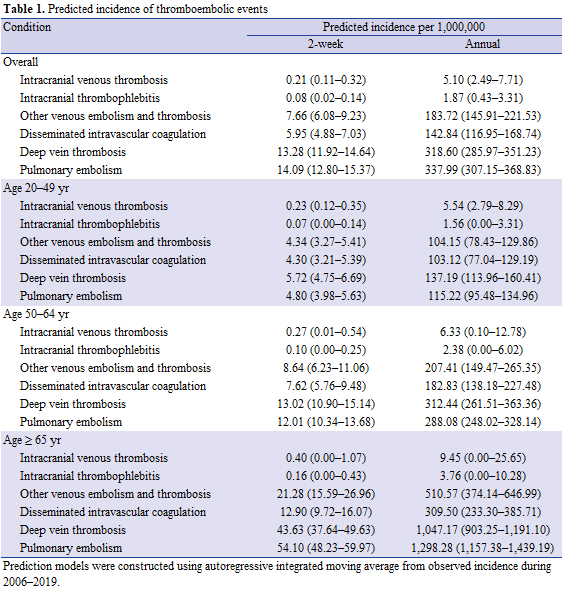Korean researchers released data that can be used to evaluate whether the incidence of thromboembolic events has risen among Koreans vaccinated against Covid-19.
The researchers analyzed the incidences of six kinds of thrombotic events, potentially linked to thrombosis with thrombocytopenia syndrome (TTS), before the Covid-19 vaccination.
The six types are deep vein thrombosis (DVT), pulmonary embolism (PE), disseminated intravascular coagulation (DIC), intracranial venous thrombosis (ICVT), intracranial thrombophlebitis (ICTP), and other venous embolism and thrombosis (OVET).
Professor Jung Jae-hun of the Preventive Medicine Department at Gachon University College of Medicine, Professor Peck Kyong-ran of the Infectious Disease Division of Samsung Medical Center, and the National Health Insurance Service’s Big Data Department published the results of measuring the incidence of six types of thrombosis from 2006 to 2020 using the health insurance claims database, in the Journal of Korean Medical Science.
The results showed that the incidence of DVT, PE, and DIC tended to increase from 2006 to 2020.
Incidence of ICVT and ICTP showed no age difference. However, OVET, DIC, DVT, and PE were more common in people aged 65 or older.

In 2021, the two-week incidence of ICVT was 0.21 per 1 million population. ICTP, OVET, DIC, DVT, and PE were expected to occur 0.08, 7.66, 5.95, 13.28, and 14.09 per 1 million, respectively.
By June 16, there were two cases of TTS among 8,548,231 people who were inoculated with AstraZeneca’s Covid-19 vaccine. The observed incidence of ICVT after vaccination occurred in 0.23 out of 1 million people.
“In the past 15 years, ICVT and ICTP had a very low incidence in Koreans and did not have a specific pattern,” the research team said.
However, the incidence of most thromboembolic events increased over time, the researchers noted. “The baseline incidence of thromboembolic events predicted in this study can be used to evaluate the possibility of an increased risk of rare and serious adverse events after Covid-19 vaccination,” the research team said.
In a YouTube show on Friday, Jung said that the most important thing to check when determining whether a certain adverse reaction was caused by vaccination is to compare its incidence to that of the general population at a usual time.
“Korea did not have any data to compare to. There was no data about the incidence of such worrisome symptoms,” he said.
Jung said there had been no evidence that thrombotic events increased because of the Covid-19 vaccination so far.
“The only data that can be monitored in real-time is NHIS data. But there is a time gap of about three months between the time of the treatment and health insurance claims data,” he said.


